All Resources
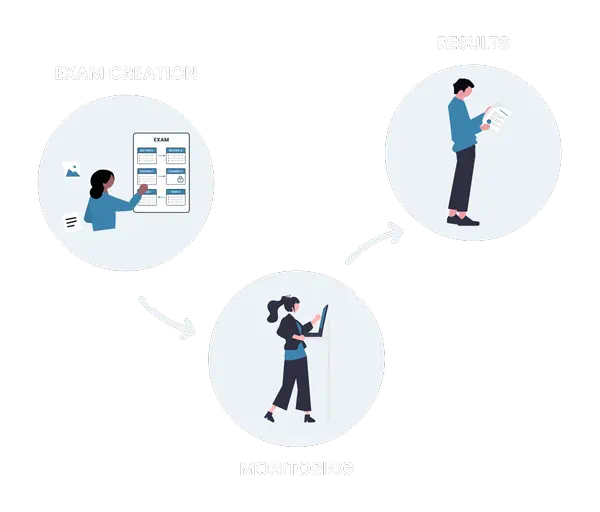



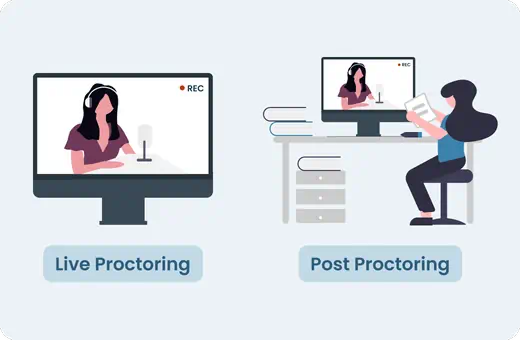



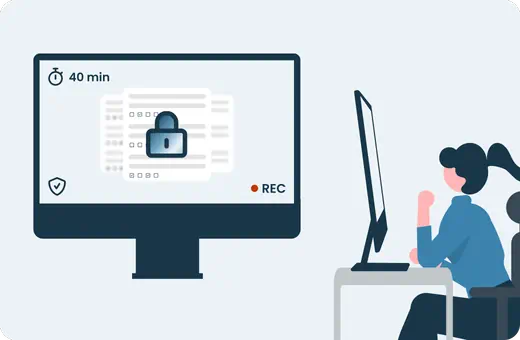



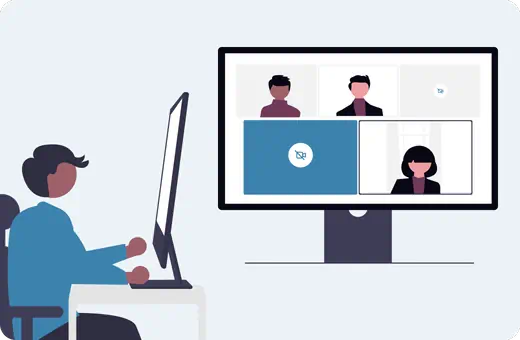







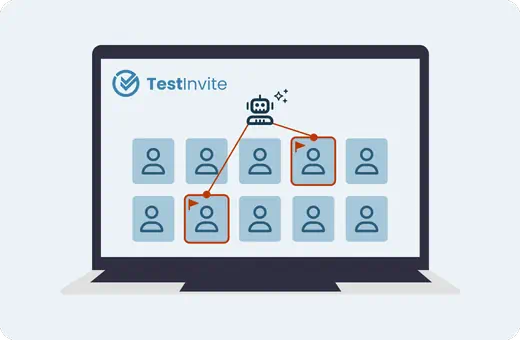



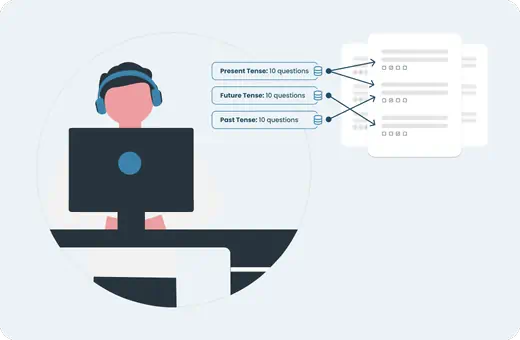



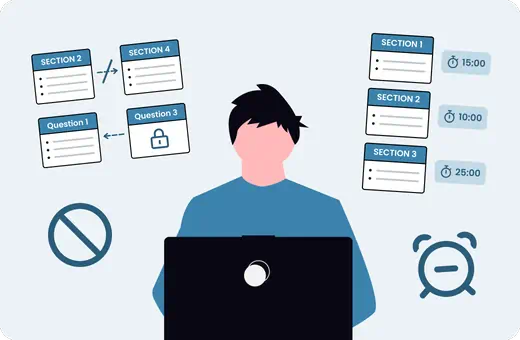



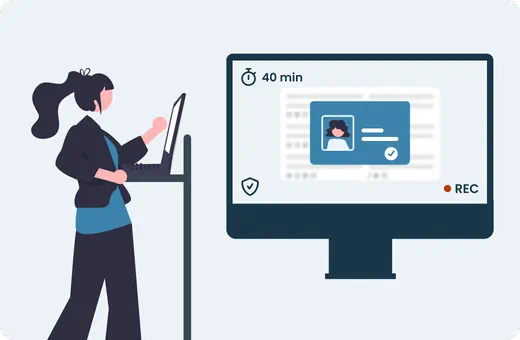



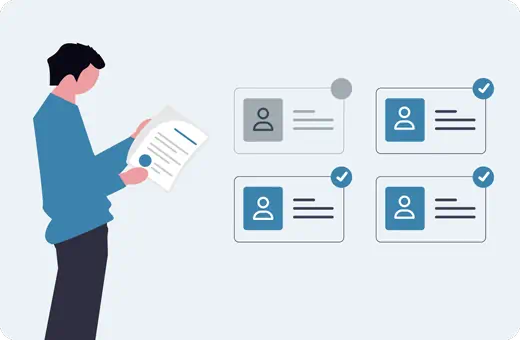
Online exams can be secured by combining technical controls, monitoring tools, and smart test design.
Start with a secure exam platform that protects access with encryption, login restrictions, and unique test links. Use question randomization so each candidate receives a different but equivalent version of the test, and shuffle answer options to avoid pattern-based cheating.
Add online proctoring to monitor candidates through their webcam, screen, and microphone. This helps detect unusual behavior, such as switching tabs or talking to others. Enabling a lockdown browser can also block copying, pasting, or opening new windows.
Before the test, require ID verification or face matching to confirm the test-taker’s identity. During the test, apply time limits and prevent re-entry once the session begins. Afterward, review activity logs and proctoring reports to identify any suspicious actions.
Combining these methods ensures that organizations can administer exams securely and fairly, even when taken remotely.
Key security measures in online testing environments include:
• Encrypted access: Protect data and communication with HTTPS/SSL encryption.
• Unique logins and access links: Ensure only authorized candidates can enter the exam.
• Browser lockdown: Prevent opening new tabs, taking screenshots, or copying content.
• Question randomization: Deliver unique but equivalent test versions to each candidate.
• Time limits: Keep exams fair and prevent over-time answering.
• Identity verification: Confirm candidates’ identity with ID checks or face recognition.
• AI or live proctoring: Monitor webcam, screen, and microphone activity in real time.
• Activity logs and reports: Review behavior and detect anomalies after the exam.
Online exam platforms protect test content through multiple layers of security:
• Encrypted data storage and transfer: All questions, answers, and media are protected using HTTPS/SSL encryption.
• Access control: Only authorized users such as test creators, admins, and assigned candidates can access test materials.
• Role-based permissions: Prevents unauthorized editing, downloading, or sharing of exam content.
• Item bank protection: Questions are securely stored in a centralized bank inaccessible from outside the system.
• Randomized test assembly: Each participant receives a unique version of the exam to minimize item exposure.
• Watermarking and content tracking: Enables tracing and identification of any leaked content.
• Limited visibility: Test materials are only shown during active exam sessions and hidden afterward.
• Secure backups: Regular encrypted backups ensure data integrity and prevent loss or tampering.
Organizations protect exam data through robust cybersecurity and access control measures:
• Data encryption: All information is encrypted during storage and transmission to prevent unauthorized access.
• Secure servers: Exams and user data are hosted on trusted, certified servers that undergo regular security audits.
• Access control: Only authorized personnel can view or manage sensitive data, enforced by role-based permissions.
• Regular security updates: Systems are continuously updated to address emerging vulnerabilities.
• Secure backups: Encrypted backups ensure data is safe from loss or corruption.
• Compliance with privacy regulations: Follows standards such as GDPR for lawful and ethical data handling.
• Monitoring and logging: All access and activities are recorded to detect and respond quickly to suspicious behavior.
Online exam platforms safeguard test results through comprehensive data protection and access control measures:
• Encrypted storage and transmission: All results are securely encrypted during transfer and storage to prevent unauthorized access.
• Access control: Only authorized users, such as exam administrators or evaluators, can view, manage, or download results.
• Role-based permissions: Clearly defines who can access, edit, or share results within the platform.
• Compliance with privacy laws: Ensures adherence to standards like GDPR for lawful and transparent data processing.
• Audit trails: Records all accesses and modifications to maintain accountability and traceability.
• Data retention and deletion policies: Regulates how long results are stored and ensures secure deletion once they are no longer required.
Organizations can improve exam security by combining multiple anti-cheating measures. For example, combining lockdown with screen and video recording ensures candidates cannot open other applications, access external resources, or communicate with others, while every action is monitored and recorded to prevent cheating.
Similarly, pairing question randomization, time limits, and one-way navigation ensures that every candidate faces a unique, fair, and unpredictable exam. Strategically integrating these features makes the system not only harder to cheat but also more reliable, delivering the highest level of integrity across all exam sessions.
Online exam security is essential to protect the fairness and credibility of the entire assessment process. Strong security measures ensure that results are reliable, valid, and truly reflect each candidate’s knowledge and skills.
Without them, risks such as cheating, identity fraud, unauthorized access, or content leaks can undermine trust in the exam results. This not only damages the value of the assessment but can also harm the reputation of the institution or organization running it.
Yes. Online exam security can be tailored to each organization’s needs. Not every measure has to be applied; administrators can decide which features, such as proctoring, lockdown tools, or question randomization, are most appropriate for their specific exams. This flexibility ensures the right balance between security, candidate experience, and practicality.
In TestInvite, no installation is required. Our secure online exam software runs all security measures, including browser lockdown, recording, and monitoring, directly through the web browser.